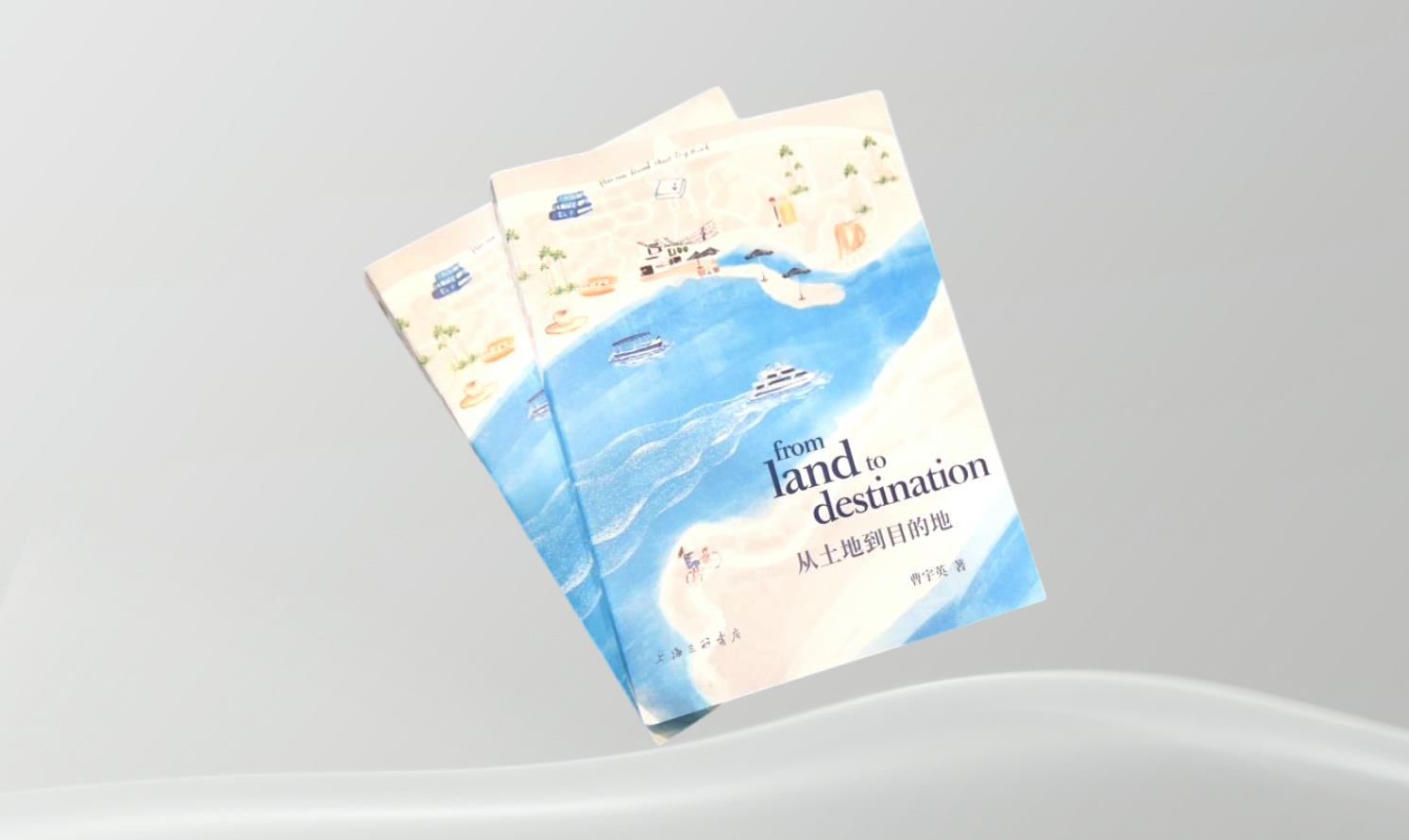流域水生态保护与修复的多维视角与差异化策略
Multi-dimensional Perspectives and Differentiated Strategies of Basin-Scale Water Ecological Conservation and Restoration
作者:赵进勇 ZHAO Jinyong
摘要
河湖水生态状况事关民生福祉,而流域是开展河湖水生态治理的最佳单元,为准确把握高质量发展阶段下河湖水生态治理的发力点,满足人民日益增长的美好生活需要,需在流域单元下从自然生态系统功能过程、历史、社会人文与艺术等多维视角,对水生态保护与修复进行立体认知,并根据不同区域的自然禀赋、经济条件及文化底蕴等情况采取差异化策略,以生态与文化为双内核,对流域水生态系统演替、水文化形态演进及大地景观格局演变等多个过程进行动态耦合,合理选择流域、区域、河流廊道、河段等作为工作尺度,以达到事半功倍之效。希望藉由本期中流域治理理念指导下的理论研究与实践探索,推动空间规划、水利工程与景观设计等多学科与行业的交流互动,营造安全、洁净、健康、美丽的河湖水系,建设造福人民的幸福河。
关键词:流域;河湖;生态保护与修复;多维视角;差异化策略
Abstract
The status of water ecological environment matters to the well-being of all people. A water ecological management system for high-quality development is required to meet people’s ever-growing expectations for a better life. This relies on a comprehensive understanding of water ecosystems from multi-dimensional perspectives—processes of ecosystem services, history, culture, and art—at the basin scale. Moreover, differentiated strategies should be proposed to adjust to varied natural resource endowment, and socio-economic and cultural heritage in different regions. Only by centering on both ecology and culture through multiple processes (e.g., evolution of regional river basin ecosystem, water cultures, and landscape patterns) dynamically under proper scales (basin, region, river corridor, or river reach), can the water ecosystem function more effectively. In this issue, LA Frontiers hopes to propel interaction between multiple disciplines and industries among spatial planning, hydraulic engineering, and landscape design with research and practice, so as to ensure a safe, clean, healthy, and picturesque river–lake system for people’s well-being.
Keywords
Basins; Rivers and lakes; Ecological Conservation and Restoration; Multidimensional Perspectives; Differentiated Strategies
跨越界面的生态设计——重庆市三峡库区澎溪河河/库岸带生态系统修复
Ecological Design Across Interface: Ecosystem Restoration of Pengxi River/Reservoir in Three Gorges Reservoir Area, Chongqing
作者:袁兴中,向羚丰,扈玉兴,程威,黄亚洲,熊森,袁嘉,王芳 YUAN Xingzhong, XIANG Lingfeng, HU Yuxing, CHENG Wei, HUANG Yazhou, XIONG Sen, YUAN Jia, WANG Fang
摘要
河岸带是典型的生态交错区,是联系陆地和水生生态系统的重要界面,环境胁迫最易富集,河流自然调节也最为活跃,故而也是河流与景观环境耦合的核心部位。然而,水坝的建设及因此形成的水库的运行调节方式使得多数河段单一的河岸界面变成河/库交替的界面,由此对流域水文及水环境,以及流域整体生态系统产生巨大影响。本文在探讨河岸带界面概念、界面生态特征的基础上,提出了河/库岸带界面生态设计策略及基本技术框架,并以重庆市三峡库区澎溪河流域为例,探讨了河/库岸带界面生态系统修复设计实践。该项目从综合要素设计、结构设计、功能设计与过程设计4个方面,进行了适应水位变化的河/库岸界面生态系统修复设计与实践研究。生态绩效分析结果表明,修复后的乌杨坝河/库岸界面生态系统生境类型多样性增加明显,生物多样性提升效果显著,植物群落适应水位变化能力强,对面源污染具有明显的净化功能,实现了界面生态修复与滨水空间景观建设和优化协同共生。该项目是河/库岸带界面生态系统修复设计和实践的创新探索,其设计策略及模式可应用于受水位调节影响的河/库岸带生态系统修复。
关键词:生态设计;生态系统修复;河/库岸带生态界面;澎溪河流域;三峡库区;季节性水位变化
Abstract
Riparian zone is a typical ecotone that connects terrestrial and aquatic ecosystems. At the same time, environmental stress magnifies here and the natural regulation of rivers is extremely active. In other words, the most dynamic and vibrant interactions between rivers and landscapes occur in riparian zones. However, the construction of dams and the operation of reservoirs have turned many riparian zones into river/reservoir alternation interfaces, influenced the shaping of hydrological and water environment, and the basin ecosystem as well. By introducing the definition and ecological characteristics of river/reservoir interface, this paper proposes the strategies and technical framework for the ecological design of river/reservoir interface. By studying the ecosystem restoration project of river/reservoir interface of Pengxi River in Three Gorges Reservoir Area of Chongqing, which emphasizes the comprehensive element design, structural design, functional design, and process design, this paper aims to provide a reference for related research and practice on river ecosystem restoration. The results of ecological performance analysis showed that the restored ecosystem of the Wuyangba river/reservoir interface has an obvious increase in habitat type diversity and biodiversity, a strong ability of plant communities to adapt to seasonal water level fluctuation, and an improvement in purifying non-point source pollution. The project demonstrates the coordination and symbiosis of interface ecological restoration and waterfront landscape construction and optimization. The project offers an innovative effort in exploring ecosystem restoration design and practice of river/reservoir interfaces. The design strategies and framework can be a reference for other ecosystem restoration cases that are affected by water level fluctuation in river/reservoir interfaces.
Keywords
Ecological Design; Ecosystem Restoration; River/Reservoir Ecological Interface; Pengxi River Basin; Three Gorges Reservoir Area; Seasonal Water Level Fluctuation
基于生态安全格局理论的中国生态基础设施规划实践综述(1997~2019年)
Review of Ecological Infrastructure Planning Practices Based on the Ecological Security Pattern Theory in China (1997 ~ 2019)
作者:司雨田,方瑾,许立言 SI Yutian, FANG Jin, XU Liyan
摘要
本研究梳理了北大景观和土人设计团队20余年来在生态安全格局理论指导下的生态基础设施规划设计项目,探索了生态安全格局理论在各生态类型区和特殊生境中,以及各种生态过程分析方法在实践中的应用及拓展。由于本研究涉及的近百个实践项目所处生态类型区不同,因此在将生态安全格局理论应用于生态问题时存在一定的地域性差异。然而,类似生境内的项目需要应对的重点生态问题存在共性。目前,该理论已从最初的面向生物栖息地保护的“试验性”理论,发展到包含所有重要生态过程及其子过程的庞大理论体系。本文重点关注生态安全格局理论在区域和城市尺度上的实践,试图梳理:1)当该理论应用至更广泛的生态类型区后,生态基础设施规划如何能够针对性地解决地方性生态问题,以及该理论在不同生态类型区中应用情况的异同;2)针对典型生境的规划,利用该理论来协调人地关系、寻求协同发展的方法;3)该理论在空间广度上的拓展对理解生态过程、建立生态安全子格局,以及更新分析技术的影响。本研究通过实证分析表明,不论是就方法论还是实践应用而言,生态安全格局理论均为我国生态文明建设做出了贡献,为国土空间规划提供了宝贵的技术支持和理论依据。
关键词:生态安全格局;生态基础设施;生态区划;生态问题;生物栖息地;中国生态文明建设
Abstract
This paper reviews the ecological infrastructure planning practices by LA PKU and Turenscape over the past two decades, discussing the application and development of the ecological security pattern theory in different types of ecoregions and typical habitats, and that of ecological process analysis methods in practice. Nearly 100 studied projects employed this theory to address different local ecological problems. But similarities could be found regarding the key ecological issues among similar habitats. Far from mainly addressing habitat protection issues at its early stage, the ESP theory by now has expanded its application to all important ecological processes and sub-processes. This paper focuses on related application at urban and regional scales, attempting to summarize 1) approaches to solving local ecological problems via ecological infrastructure planning in a wider geographic range, and differences concerning the application modes in varied ecoregions; 2) ways to harmonize man–land relations and to achieve synergic development in typical habitats; and 3) influence brought by the wider spatial range to the application on the understanding of ecological processes, the establishment of sub-security-patterns, and the renewal of analysis techniques. The empirical analysis in this study suggests that both the methodology and application of the ESP theory contribute to China’s ecological civilization construction, providing valuable technical support and theoretical basis for territorial spatial planning.
Keywords
Ecological Security Pattern; Ecological Infrastructure; Ecological Zoning; Ecological Problems; Habitats; China’s Ecological Civilization
解读俞孔坚:通向生态文明的建设性后现代主义途径
On YU Kongjian: A Constructive Postmodernism Approach Towards Ecological Civilization
作者:杰伊•麦克丹尼尔,小约翰•博斯维尔•柯布,彭晓 Jay McDANIEL, John Boswell COBB Jr., PENG Xiao
摘要
5月29日,2021年约翰•柯布共同福祉奖颁奖典礼在线举行,该奖项是世界范围内生态哲学领域的最高荣誉之一,北京大学建筑与景观设计学院教授俞孔坚获此殊荣。在颁奖仪式上,杰伊•麦克丹尼尔博士致辞,总结了俞孔坚的景观设计思想和实践;小约翰•博斯维尔•柯布及其他多位学者也对俞孔坚的作品给予了高度评价。本文是对这些致辞和评价的记录和补充。致辞嘉宾表示,俞孔坚的作品体现的是一条“建设性后现代主义”的途径,将现代的理想生活方式与过去的智慧相结合,指向一种更绿色、宜居的未来。他们认为,在当前生态危机背景下,俞孔坚的景观设计思想和实践的确是一门“生存的艺术”。从建设性后现代主义的视角来看,俞孔坚将传统知识融入其前瞻性思想,帮助人类和地球设计了一种更具光明前景的未来。本文探讨了生态文明理念如何通过审美、规划和设计观念的转变“落地”,以及俞孔坚的景观设计思想和实践探索是如何帮助中国在世界生态文明转型中确立其引领地位的。
关键词:约翰•柯布共同福祉奖;景观设计;建设性后现代主义;生态文明
Abstract
On May 29, the 2021 John Cobb Common Good Award presented online was awarded to Yu Kongjian, professor of College of Architecture and Landscape of Peking University. This award is one of the highest honors in the field of Ecological Philosophy offered throughout the world. In the award ceremony, Dr. Jay McDaniel gave a speech to summarize Yu’s ideas and practices; and other scholars, including John Boswell Cobb Jr. also commented on Yu’s works. This article is a record and supplement of the speech and these comments. The speakers showed that Yu’s works reflect an approach they call “constructive postmodernism,” which combines poetic modern ways of living with wisdom from the past, pointing toward a greener and more habitable future. In light of the current ecological crisis, the speakers proposed that Yu’s Landscape Architecture is indeed “an art of survival.” In the spirit of constructive postmodernism, Yu combines traditional knowledge with a forward-looking attitude, helping to design a more promising future for humanity and the Earth. This essay explores ways that the idea of ecological civilization can “come down to earth” through shifts in attitude towards planning, designing, and aesthetic appreciation, showing how Yu’s thoughts and explorations will help China establish its leading role in the world’s transformation toward global ecological civilization.
Keywords
John Cobb Common Good Award; Landscape Architecture; Constructive Postmodernism; Ecological Civilization
重塑洛杉矶河:连接公共开放空间的51英里
The Los Angeles River Reimagined: 51 Miles of Connected Public Open Space
作者:杰西卡•M•汉森,马克•汉娜 Jessica M. HENSON, Mark HANNA
摘要
因其特殊的混凝土河道,洛杉矶河可能是世界上最具辨识度的河流之一。随着洛杉矶地区的城市化逐渐推进,这条河流为降低洪水发生风险而被渠化,在一些人眼中,这是建筑工程史上的丰功伟绩,而在另一些人眼中则是一场生态灾难。洛杉矶河流经17个城市,其中不乏洛杉矶县境内环境最恶劣、公园最稀缺、服务水平最差的一些社区。在河道的通行权范围内有超过930多公顷的公共用地可以用来重塑洛杉矶河,这将会影响河道周围1.6km范围内100万人的生活。
洛杉矶河总体规划由洛杉矶县主导,计划于2021年秋季完成。该规划提议建设长约51英里(约82km)相互连接的公共开放空间,其中包括一系列多效益项目,共响应了9个总体目标,从防洪韧性到房屋经济实用性,再到生态功能、艺术、教育和文化等。在这一面向未来25年的基于数据的规划中,进行了一项针对全流域的研究,致力于记录和理解与环境和社会问题相关的水质、水源地保护与洪水风险的话题。规划还提出了兼具传统与创新策略的“工具包”,配置了栖息地桥梁、干旱河谷侧渠等在内的65种设计工具,旨在提升生态系统服务、形成一个欣欣向荣的城市居所和相互连接的滨河公园网络。
关键词:流域分析;目标驱动的规划框架;基于数据;生态功能;工具包;生物多样性;洪水风险
Abstract
The concrete channel of the Los Angeles (LA) River is probably one of the most recognizable rivers in the world. Channelized to manage the risk of flooding as the Los Angeles region urbanized, the river today is an architectural and engineering feat in the eyes of some people but an ecological disaster to others. The river flows adjacent to 17 cities and among some of the most environmentally burdened, park poor, and underserved communities of LA County. With over 2,300 acres of largely publicly owned land within the river right-of-way, a reimagined LA River can impact the lives of the one million people that live within a mile of the river.
The LA River Master Plan, led by Los Angeles County and scheduled to be completed in fall 2021, proposes 51 miles of connected public open space with multi-benefit projects supporting nine goals ranging from flood resilience to housing affordability, to ecological function, and to arts, education, and culture. The data-based plan for the next 25 years includes a watershed-wide research effort to document and understand water quality, water conservation, and flood risk in relation to environmental and social issues. The plan includes traditional and innovative strategies within a “kit of parts,” interventions that include over 65 components ranging from habitat bridges to dry arroyo side channels demonstrating opportunities for enhancing ecosystem services to create a thriving urban habitat and connected network of parks along the river.
Keywords
Watershed Analyses; Goal-Driven Planning Framework; Data-Based; Ecological Function; Kit of Parts; Biodiversity; Flood Risk
基于源-网-厂-河系统理念的流域生态修复:以广东省深圳市茅洲河(宝安片区)水环境综合治理工程为例
Basin-Scale Ecological Restoration Based on the “Source–Network–Plant–River” Concept: A Case Study of Maozhou River (Baoan Section) Water Environmental Remediation in Shenzhen, Guangdong Province
作者:魏俊,黄森军,唐颖栋,王明铭,孙大洋,王韶伊,申屠华斌 WEI Jun, HUANG Senjun, TANG Yingdong, WANG Mingming, SUN Dayang, WANG Shaoyi, SHENTU Huabing
摘要
中国的城市建设高强度开发占用水系空间,增大了水系污染负荷,导致以黑臭水体为典型的流域水污染加剧,水生态环境遭受严重破坏。本文以广东省深圳市茅洲河(宝安片区)水环境综合治理工程为例,在充分研判场地现状、全面开展水环境要素摸排的基础上,梳理了流域内入河污水量大、生态基流不足、河底淤积严重、岸线硬化率高等关键问题;项目创新性地提出了基于“源-网-厂-河”系统理念的生态修复技术框架,建立了水环境综合治理、河流底质栖息环境优化、多目标生态补水及滨水生态修复的全要素治理技术体系,开展了源头海绵城市建设、管网雨污分流、底泥清淤及资源化利用、生态补水等系列工程。此外,项目进一步推进全域法制化、精细化、智慧化创新管理模式建设。项目实施后,河流水质明显提升,流域内黑臭水体悉数消除,生态系统逐步改善。本项目先行探索的“源-网-厂-河”系统理念可为中国流域水生态修复实践提供有益参考。
关键词:流域;茅洲河;“源-网-厂-河”系统治理;黑臭水体治理;生态修复;水环境综合治理
Abstract
In China's urban construction, intensive development increasingly encroaches the city’s water space and exacerbates water pollution problems including black-odor water bodies, seriously damaging the water ecosystem. This article demonstrates the Maozhou River (Baoan Section) Water Environmental Remediation project in Shenzhen, Guangdong Province, which is a latest practice case of representativeness in comprehensive on-site investigation and problem-finding of all kinds of water environmental elements. Identifying main problems including the large amount of sewage discharging into the river, insufficient ecological base flow, severe river siltation, and high hardening rate of the waterfront, the project innovatively proposed an ecological restoration technology framework based on the “source–network–plant–river” concept, developed a full-element-treatment technique roadmap for water environment management, improvement of riverbed habitat, multi-objective eco-water recharge, and waterfront ecological restoration, and carried out a series of measures such as sponge city construction for pollution source control, rainwater-sewage diversion system, sediment dredging and resource utilization, and eco-water recharge. In addition, the project further promotes the legislation, refined management, and intelligent basin governance mode. The ecological restoration has significantly improved the water quality of the river, eliminated all black-odor water bodies in the basin, and enhanced the ecosystem resilience. The “source–network–plant–river” concept demonstrated in this project can provide a reference for the practice of water ecological restoration in China's river basins.
Keywords
Basin; Maozhou River; Source-Network-Plant-River Remediation System; Black-Odor Water Body Remediation; Ecological Restoration; Comprehensive Water Environmental Remediation
基于生态系统服务的黄河滩区生态修复模式探索——以郑州黄河滩地公园规划设计为例
Exploration on Ecological Restoration Model for the Improvement of Ecosystem Services of Yellow River Floodplains—A Case Study of Zhengzhou Yellow River Floodplain Park Planning and Design
作者:俞孔坚,龚瑶 YU Kongjian, GONG Yao
摘要
黄河流域是中国重要的生态屏障和经济带,黄河生态系统是一个有机整体,下游的黄河滩地对流域生态系统健康和生物多样性具有重要意义。然而,当前黄河下游滩区自然环境相对复杂,加之受到防洪政策、农业活动、村庄建设、生产堤等诸多因素的影响,自然生态系统遭受到较大破坏,生态系统服务功能受损严重,影响黄河流域的健康发展。郑州黄河滩地公园规划设计项目通过科学识别黄河嫩滩、二滩和高滩的特征,落实分区、分类施策的三滩生态修复措施,突出黄河滩地原真性和自然特色,完善供给、调节、支持、文化全方位的生态系统服务;同时引入沿黄慢行系统与休闲创意产业,基于生态系统服务提升获得高品质的文化感知与休闲体验,推动绿色生产和生活方式,统筹应对黄河滩区防洪安全、生态安全、绿色发展等问题,满足人民群众对美好生活的向往,为黄河下游滩区生态治理与绿色发展提供参考。
关键词:黄河下游滩区;生态修复;生态系统服务;慢行系统;高质量发展
Abstract
The Yellow River Basin is one of the greatest and most important ecological barrier and economic belt in China. When the Yellow River Basin is seen as an ecosystem in whole, the floodplains in the lower reaches are critical to the basin’s health and biodiversity. However, due to the extreme complexity of the natural environment of the floodplains, current flood control policies, long-term agricultural activities, and extensive rural construction and production dikes, the river ecosystem has suffered from considerable damage and a serious decline of ecosystem services. In the planning and design project of the Zhengzhou Yellow River Floodplain Park, the characteristics of the lower, intermediate, and higher floodplains have been carefully identified, site-specific ecological restoration measures for each floodplain type were implemented, highlighting the authenticity and natural qualities and improving the overall ecosystem services. In addition, a slow traffic system and innovative industries along the Yellow River are introduced to enable high-quality cultural perception and recreational experience of the improved ecosystem services, promote green production and lifestyle. These measures help make the Yellow River a river that truly benefit the locals. In the context of ecological protection and high-quality development of the Yellow River, as a national agenda, the ecological restoration planning strategies proposed in this article provides a reference for the development of ecological management and green economy in other sections of the lower reaches of the Yellow River.
Keywords
Floodplains in Lower Reaches of the Yellow River; Ecological Restoration; Ecosystem Services; Slow Traffic System; High-Quality Development
健康的港口未来:重新审视河口景观沉积物
Healthy Port Futures: Rethinking Sediments for Rivermouth Landscapes
作者:特蕾萨•鲁斯维克,肖恩•伯克霍尔德,布莱恩•戴维斯,马修•莫菲特 Theresa RUSWICK, Sean BURKHOLDER, Brian DAVIS, Matthew MOFFITT
摘要
在整个五大湖地区,港口城市往往位于河口区域。河口曾经将河流沉积物分拣、塑形,并运输到湖中,如今被用作工业航道,需要定期进行机械疏浚维护工作。以往的沉积物管理实践要么将近岸的河流沉积物封存在封闭式处理设施(CDF)中,要么释放于更深的开放水域。这两种处理方式都从近岸系统中清除沉积物,使得其无法在岸线保护、栖息地营造、波能削减和填沙护滩等方面发挥潜在用途。综合上述两种封闭式(如封存于CDF)和低成本开放式(释放于开放水域)的处理方式,新型河口湿地得出了处理和运用沉积物的策略。本文描述了由五大湖保护基金支持的“健康的港口未来”项目所进行的一项尝试。通过协作设计和研究,本项目使用了系列工具集来生成、推测、建模、可视化和测试多个不同社会、生态和水文条件下的湿地形态。该项目可以被形象地称作“月牙”,它提出了一种半圆形、部分开放的单元式湿地设计,以应对河口环境的复杂性。在整个设计-研究过程中,项目试图接纳不确定性、评估风险并探索相应结果,以重新定义公众对湿地营造和修复的期望,并重新构想五大湖沿岸的新面貌。
关键词:河口;沉积物;疏浚;湿地;五大湖区域;设计结合研究
Abstract
Throughout the Great Lakes, port cities are often located on the rivermouth and where rivermouths once sorted, shaped, and moved the riverine sediment into the lake. Their current use as industrial navigation channels requires cyclical mechanical maintenance dredging. Past sediment management practices have either placed the riverine sediment nearshore in confined disposal facilities (CDFs) or out in deeper open water. Both practices remove the sediment from the nearshore system, preventing its potential use in coastal protection, habitat creation, wave attenuation, and sediment nourishment. However, novel rivermouth wetlands can draw from both strategies of containment (as in a CDF) and cost-efficiency of non-containment (open lake disposal) to allow for the processing and use of sediment. This article will describe one such attempt, conducted by the Great Lakes Protection Fund-supported Healthy Port Futures project. Through a collaborative design-research process, Healthy Port Futures used a range of tools to generate, speculate, model, visualize, and test wetland forms under a range of social, ecological, and hydrological conditions. This project, understood colloquially as “the Crescent,” proposed a semi-circular, partially open-cell wetland design as a response to the complexity of rivermouth conditions. Throughout this design-research process, the project sought to acknowledge uncertainty, assess risk, and explore a range of outcomes in order to redefine the public expectations around wetland creation and restoration, and reimagine innovation along the Great Lakes coast.
Keywords
Rivermouth; Sediment; Dredging; Wetlands; Great Lakes; Design Research
关于河流与绘画实践
On Rivers and Drawing Practice
作者:劳雷尔•麦克雪莉 Laurel McSHERRY
摘要
本文所述的笔者作品源于两个论题:一是场地和环境相互依存;二是理解“为什么”和“怎么做”是景观设计的基础和必要条件,并且以苏格兰裔美籍景观设计师伊恩•麦克哈格和苏格兰城市规划师帕特里克•盖迪斯的项目及研究成果为创作基础。尽管两人提出理论的年代相隔近半个世纪,但由于同样看重地域性知识对于当地设计和规划实践的重要作用,他们的实践主题和方法也秉持相似的准则。笔者近期的一项研究对比了对麦克哈格的研究成果颇有影响的两条河流—克莱德河和特拉华河。受这项研究的启发,本文展现了表达增量变化、叠加以及时间推移的横断面模型及相关绘图实践。文章首先讨论了地形图及其在美国、意大利和英国苏格兰的河流流域研究中的应用;随后,简要回顾了麦克哈格和盖迪斯对区域规划理论和实践的贡献;进而介绍了以横断面为基础的实践项目对于其他学科领域观察和分析景观现象的实用意义,相关结论亦成为了笔者近期一次基于拓印和数字绘图技术的展览的理论基础。文章最后重申了实地考察对景观设计和其他基于环境的创造性作品的重要意义。
关键词:流域;景观历史;横断面模型;持续性绘图实践;景观演变
Abstract
This work flows from two propositions: sites and settings are interdependent, and understanding why and how is fundamental and inexhaustible for landscape architecture. It builds on the work of Scottish–American landscape architect Ian McHarg and Scottish town planner Patrick Geddes. Although separated in time by nearly half a century, their shared belief in the role of regional knowledge for local design and planning led to parallels in their canon relative to subject matter and approach. Prompted by a recent comparative study of two rivers influential to McHarg’s work—the Clyde and the Delaware—the essay reflects on transect modeling and related drawing practice that engage incremental change, accumulation, and time. It begins with a discussion of relief maps and their application to river basin research in the United States, Italy, and Scotland. This is followed by a brief retrospective on the contributions of McHarg and Geddes to regional planning theory and practice. The interdisciplinary usefulness of transect-based practice for observing and analyzing landscape phenomena is then presented, and provides context for a recent exhibition by the author, which explored both analog and digital drawing techniques. The essay concludes by reasserting the importance of field study to landscape architecture and other works of environmental imagination.
Keywords
Drainage Basins; Landscape History; Transect Models; Durational Drawing Practices; Landscape Change
“卢尼地带”研究:突破河流定义的“水分关键带”
Engaging Luni: A Critical Zone of Wetness rather than a River
作者:普拉库•波塔普 Prakul POTTAPU
摘要
在地理视角下,卢尼河是一条穿越印度塔尔沙漠的季节性河流,此时的沙漠即为一片毫无生机或极度缺水的区域,需要通过管道和运河向其输送水源。但若将这一场地理解为处于云层和含水层之间的“水分关键带”,“卢尼”便可被定义为一处拥有丰富多彩文化的开敞空间,这里孕育着制盐、陶艺、音乐、木版印刷和印染等多种受季风影响的传统技艺。2018年,由宾夕法尼亚大学斯图尔特-韦茨曼设计学院阿努拉达•马图尔教授组织并主持的设计课程通过模拟图像、压印和蒙太奇等方式,利用后一种范式来研究“卢尼”,以构建另一种“场地”。有别于从“河流”的视角来理解卢尼河,此设计方法所探究的是另一种视角下的“卢尼地带”—无处不在的水分。设计方案“共鸣乐器”即为此课程的成果之一,方案摒弃了一般地图中将场地局限为地理表面的传统,运用绘画、摄影、版画和蒙太奇等方法,将场地打造成为一处“水分关键带”。针对“卢尼地带”的具体研究应用这些方法建造了“水分关键带”中的“乐器”装置。在这里,协商沟通、灵活变通和容许差异的设计方式比刻板固定、一刀切、严格划定和精准定义的模式更加适用。
关键词:河流景观;降雨地带;水分;音乐;模拟图像;蒙太奇
Abstract
When the ground is understood as a geographic surface, Luni is articulated to be a seasonal river that flows through the Thar Desert in India. In this paradigm, the desert is perceived as empty or as a place of scarcity to which water must be brought in pipes and canals. However, when situated within a “critical zone of wetness” that extends from clouds to aquifers, Luni is a culturally vibrant open terrain where various traditional practices of habitation—salt production, pottery, music, block printing, and dyeing—are acutely tuned to the monsoon. The design studio organized and instructed by Professor Anuradha Mathur in 2018 at the Stuart Weitzman School of Design, University of Pennsylvania engages the latter through analog prints, imprints, and montages to construct another ground. This approach pursues Luni as ubiquitous wetness, rather than understanding the Luni-as-a-river differently. The design project “Resonating Instruments” is an outcome of this studio. Instead of working with maps that construct the ground as a geographic surface, the project uses drawing, photography, printmaking, and montage as techniques of negotiation to construct the ground as a “critical zone of wetness.” These techniques were used to engage Luni and to construct the instruments in a “critical zone of wetness,” where negotiation, flexibility, fluidity, and gradients are favored over rigidity, separation, and strict delineations and definitions.
Keywords
River Landscapes; Rain Terrain; Wetness; Music; Analog Prints; Montage














